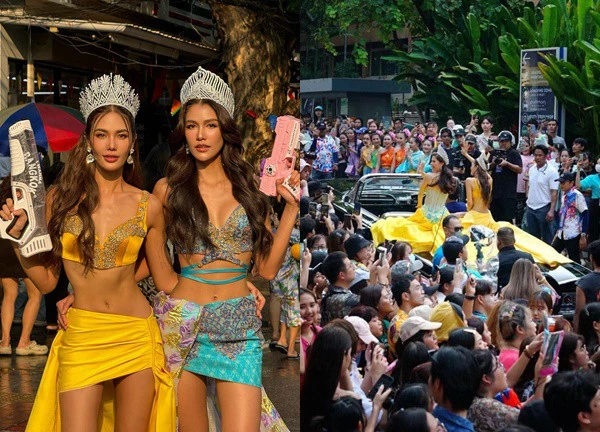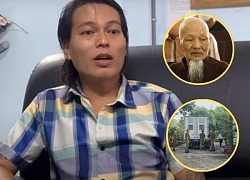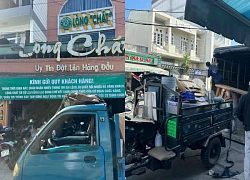The Miss Universe team wore crowns and disturbed the water at the Songkran water festival

4 | 1 Discuss | Share
Famous for its ubiquitous water splashing activities, Songkran is more than just a fun water battle. The event also contains many Thai cultural traditions.
Songkran is a long-standing traditional Thai New Year celebration, officially held since 1941, usually on April 13-15 every year.
In the past, Thailand's Songkran water festival coincided with the time of harvest, so ancient people created activities to relax as well as create opportunities for young people to meet, socialize, and splash water to relieve stress. The heat of April. Unlike the traditional New Year of other countries, Thailand's Songkran festival is community-based, the more people it attracts, the bigger the festival.
This festival also has the meaning of splashing water to wash away bad luck, get rid of sadness and fatigue in the old year, and bring luck and happiness in the new year to participants.
April 13 is called Wan Maha Songkran - the day the sun moves to the sign of Aries, also the last day of the old year. April 14 is called Wan Nao, connecting the old year and the new year, while April 15 is Wan Ta - leung Sok, the official day of entering the new year. These days are also an opportunity for Thai families to gather together, respect their elders and strengthen their relationship with neighbors.
Pipad Krajaejun, a history lecturer at Bangkok's Thammasat University, said Songkran has two main rituals that are still widely performed today. On the first day of the new year, April 13, people go to the temple to pour water on the Buddha statue, avoiding pouring it on the head. This ritual is called Song Nam Phra. People also clean their homes and public places such as temples and schools to remove bad luck in the old year. Nowadays, visitors to Thailand can perform Song Nam Phra at shopping malls as a recreational activity.
The second tradition takes place on April 14 called Rot Nam Dam Hua - young people use rose water and jasmine to wash the feet of their grandparents and parents to show respect. In return, the elders will bless their children and grandchildren.
The festival was included in the list of Intangible Cultural Heritage of Humanity by UNESCO on December 6, 2023. This year, Thailand organizes many major events to celebrate Songkran activities in Bangkok and five provinces: Chiang Mai, Khon Kaen, Samut Prakan, Chonburi and Phuket.
The Thai University of Commerce (UTCC) expects the country to collect up to 200 billion baht (more than 5 billion USD) during this year's Songkran festival, of which 11.8 billion baht (more than 300 million USD) USD) is the amount of money spent by foreign tourists.
Mr. Thanavath Phonvichai - Advisory Chairman of UTCC's Center for Economic and Business Forecasting - forecasts that the festival will stimulate economic growth by 2.9%, but domestic spending growth will still be slow. He said the domestic spending record of 13.5 billion baht in 2019 will not be "beaten" this year and commented that Thais remain cautious when spending.
"This year's economic growth is not uniform across the country," Mr. Thanavath Phonvichai assessed.
In Bangkok and neighboring provinces
From April 11-15, Bangkok will host the Maha Songkran World Water Festival 2024 at Ratchadamnoen Klang Road and Sanam Luang area. Large-scale parade here with more than 20 troupes, along with performances by more than 1,000 artists from Ratchadamnoen Klang to Sanam Luang.
In addition, Bangkok also has many other events held here.
From Bangkok, visitors can also participate in the Songkran festival in neighboring provinces such as Kanchanaburi, Phra Nakhon Si Ayutthaya, Chonburi, Samut Prakan, and Ratchaburi.
In the northeastern provinces of Thailand
Coming to northeastern Thailand, tourists should participate in the Isan Songkran festival from April 13 to 15 in Khon Kaen province; Songkran Mueang Udon Thani from April 13 to 16 in Udon Thani province or Songkran Nakhon Phanom on Khao Pun road, Nakhon Phanom province...
Vietnamese tourists can travel by road through Laos to enter the northeastern provinces of Thailand, or fly from Vietnam to Vientiane (Laos), then continue by car across the Laos - Thailand border to arrive.
In the North
When talking about Songkran in the Northern region, we cannot ignore Chiang Mai province. Currently, there is a direct flight from Vietnam to Chiang Mai for tourists to participate in the Songkran event called Pawe Ni Pi Mai Mueang from April 4 to 20.
From Chiang Mai, visitors can also experience Songkran activities in other neighboring provinces, such as Pi Mai Mueang Nakhon Lampang from April 7 to 13 at Lampang Museum and Clock Tower Junction, Lampang province; Pawe Ni Pi Mai Mueang from April 12 to 13 in Chiang Rai province.
In the South
The southern provinces of Thailand this year organized the Songkran No Alcohol 2024 event, Songkran on Dibuk Phuket on April 13. In addition, many famous tourist cities and provinces neighboring Phuket also organize many major festivals, such as the Phang-Nga Songkran Festival on April 13 in Phang Nga province; Surat Thani Songkran April 12-14 in Surat Thani province; Samui Songkran on April 13 in Koh Samui, Surat Thani province.
Poet Nguyen "lowered his voice" to plead with antifans, revealing the most regretful thing of the past 6 years  Hoàng Phúc16:13:04 15/04/2024Tho Nguyen is the hottest name on social networks in recent days. Even though she announced her retirement, the female YouTuber's private life is still of interest, especially when she recently publicly announced her plastic surgery.
Hoàng Phúc16:13:04 15/04/2024Tho Nguyen is the hottest name on social networks in recent days. Even though she announced her retirement, the female YouTuber's private life is still of interest, especially when she recently publicly announced her plastic surgery.

4 | 1 Discuss | Share

4 | 1 Discuss | Share

3 | 1 Discuss | Share

1 | 1 Discuss | Share

2 | 1 Discuss | Share

2 | 1 Discuss | Share

0 | 1 Discuss | Share

4 | 1 Discuss | Share

3 | 2 Discuss | Share

3 | 1 Discuss | Share

3 | 1 Discuss | Share

2 | 1 Discuss | Share










4 | 1 Discuss | Report